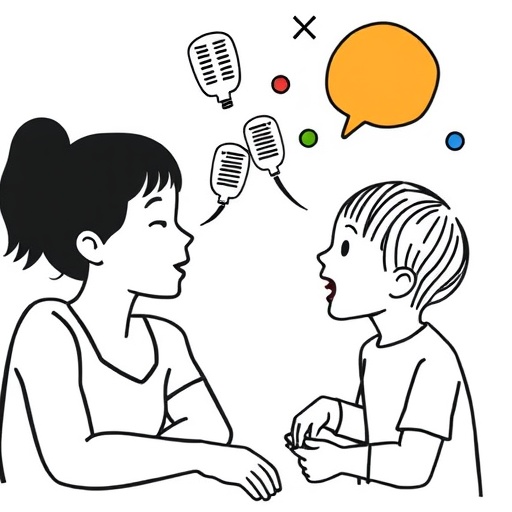Recent advancements in child language development research have underscored the crucial role that parental language input plays in shaping children’s linguistic outcomes. A study published by Fu and Zheng in the International Journal of Early Childhood (IJEC) reveals compelling insights through a rigorous three-level meta-analysis. This comprehensive evaluation addresses a growing interest among linguists and education specialists regarding how different dimensions of parental language input correlate with children’s language skills.
Meta-analysis itself serves as a methodological powerhouse, allowing researchers to synthesize findings from diverse studies to draw more generalizable conclusions. This novel approach undertaken by Fu and Zheng enriches our understanding of not just the direct relationship between parental language input and child language outcomes but also how various factors influence this interaction. By aggregating data from numerous studies, the authors present a multifaceted view that has far-reaching implications for developmental psychology, linguistics, and early childhood education.
One of the critical insights from the analysis is the differentiation in language outcomes based on the nature of parental interaction. The study identifies that both the quantity and quality of language input significantly contribute to a child’s linguistic ability. For instance, children exposed to richer, more complex language environments demonstrate advanced vocabulary skills and better overall language comprehension. This finding accentuates the necessity for caregivers to engage in meaningful conversational exchanges with their children, facilitating a supportive backdrop for language acquisition.
Furthermore, the analysis highlights the contextual dimension of language input. It suggests that the contexts within which interactions occur—such as everyday routines, playtime, or reading sessions—play an essential role in how children process language. When parents or caregivers integrate language learning into regular activities, children are more likely to develop a natural ease with language, fostering a lifelong love for communication. Such a dynamic learning atmosphere encourages children to engage actively, thereby enhancing their linguistic capabilities.
Interestingly, the meta-analysis also points out the variability of effects across different demographic groups. Factors such as socioeconomic status, cultural background, and parental education levels can moderate the relationship between language input and outcomes. For example, children from lower socioeconomic backgrounds may experience less frequent language interactions, affecting their language development trajectory. Understanding these nuances is vital for educators and policymakers who aim to formulate strategies that ensure equal opportunities for language learning across diverse populations.
As the research unfolds, it identifies significant patterns in the timing of language input as well. The critical window for robust language development appears to occur in early childhood, suggesting that parents should be actively involved in language-rich interactions during these formative years. The implications for early childhood education programs become clear: teaching strategies and parental engagement plans must prioritize creating environments enriched with language learning opportunities.
Another salient aspect of the study is the technological impact on language input. The rise of digital interactions, such as apps, videos, and educational games, opens a new frontier in language exposure. However, the findings indicate that while technology can be beneficial, it cannot fully replicate the nuances of face-to-face interaction. This points to the necessity for a balanced approach, where technology supplements but does not replace personal engagement in language learning.
Equally important is recognizing the reciprocal nature of language development. The meta-analysis reveals that as children develop their language skills, they also influence the language behaviors of their parents. This bidirectionality signifies that effective communication is not a one-way street; rather, children, too, can guide and enhance their caregivers’ linguistic interactions, leading to a richer communicative exchange.
The ramifications of this research extend beyond individual families, reaching community and educational frameworks. As we form educational policies centered around language development, the insights from Fu and Zheng’s work should fuel an understanding of the importance of parental involvement in holistic language education. Training programs for parents can be crafted to encourage consistent and engaging language practices at home, thus fostering better outcomes for future generations.
Moreover, the study brings into focus the importance of further research to explore the specifics of effective parental language input. Dimensions such as tone, enthusiasm, and variation in vocabulary are areas ripe for exploration. By examining these intricacies, future studies could definitively outline the most effective strategies for maximizing children’s language development.
A key takeaway from this research is the empowerment of parents in their children’s language journey. The findings from Fu and Zheng serve not just to inform but also to encourage proactive language engagement strategies. They highlight the notion that parents are not just passive recipients of educational guidance but rather active partners in their child’s learning process.
As we look toward the future, it becomes clear that fostering language development in children requires a multifaceted approach, one that involves the concerted efforts of parents, educators, and communities. The evidence provided in this meta-analysis reinforces the idea that parents must be equipped with the knowledge and tools they need to support their children’s linguistic development actively.
In conclusion, Fu and Zheng have provided a critical reflection on the nexus between parental language input and child language outcomes. Through their thorough analysis, they illuminate the paths through which parents can significantly impact their children’s future communication skills. This is not just a revelation for linguists and educators; it is a call to action for parents to engage deeply with their children’s language learning, thereby shaping a society that values effective communication as a cornerstone of success.
Subject of Research: The relationship between parental language input and child language outcomes
Article Title: A Three-Level Meta-Analysis of the Relationship Between Parental Language Input and Child Language Outcomes
Article References:
Fu, B., Zheng, X. A Three-Level Meta-Analysis of the Relationship Between Parental Language Input and Child Language Outcomes.
IJEC 57, 463–484 (2025). https://doi.org/10.1007/s13158-024-00406-0
Image Credits: AI Generated
DOI: 10.1007/s13158-024-00406-0
Keywords: Parental language input, child language outcomes, meta-analysis, early childhood education, language development.




